Leafy spurge identification and control
Information about the noxious weed leafy spurge. Leafy spurge is also known by its Latin name, Euphorbia virgata.
About this weed
Leafy spurge is a regulated Class B noxious weed. This means control is required in King County under the state noxious weed law. It is also on the Washington quarantine list and it is illegal to buy, sell, or offer it for sale in the state.
Leafy spurge is known as Euphorbia virgata and it is in the spurge family. Other common names include wolf’s milk.
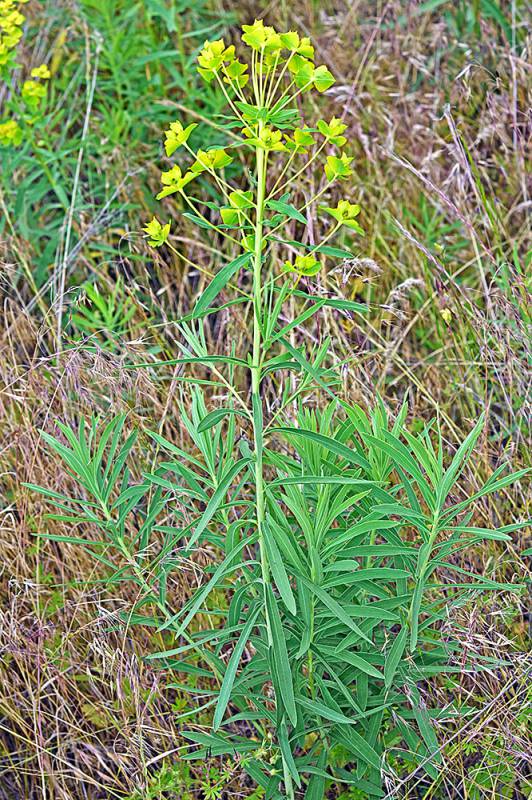
Why it’s a problem
Leafy spurge adapts to a wide range of habitats. It spreads rapidly in areas where grazing animals remove competing plants. This reduces the livestock carrying capacity of pasture, which causes major economic losses in production. The roots give off a substance that inhibits the growth of surrounding plants. This causes a reduction in plant diversity and major environmental impacts.
Leafy spurge is also toxic to humans, cattle, and horses. The plant’s white latex sap irritates the skin and can cause blindness upon eye contact. If consumed, it irritates the mouth and digestive tract.
Plant description
Leafy spurge is native to Eurasia. It is well adapted to dry, upland slopes and rocky, shallow soils. It can also spread into wet meadows and streambanks. It is most often found in pastures, rangeland, roadsides, and disturbed areas.
Leafy spurge is a long-lived perennial (2 or more years life cycle) with a deep, extensive root system. Mature plants are 1 to 3 feet tall and form dense infestations.
Leaves, stems, and roots all exude a milky, irritating sap when broken.
Narrow leaves are 1 to 4 inches long and grow alternately (leaves grow staggered, without a pair on the stem). They begin the season bluish-green and turn red in the fall. Stems originate from a crown just below the soil surface and grow upright, branching at the end.
Showy yellowish-green heart-shaped bracts (specialized leaves at the base of the flower that in this case look like petals) form clusters with inconspicuous flowers. Flowering stalks produce 10 to 50 seed capsules, each containing 3 seeds.
When dry, the capsules explode to eject the seeds as far as 20 feet away from the parent plant. Seeds can remain viable in the soil for over 15 years. The extensive root system may spread more than 15 feet, enabling the colony to expand by underground growth.
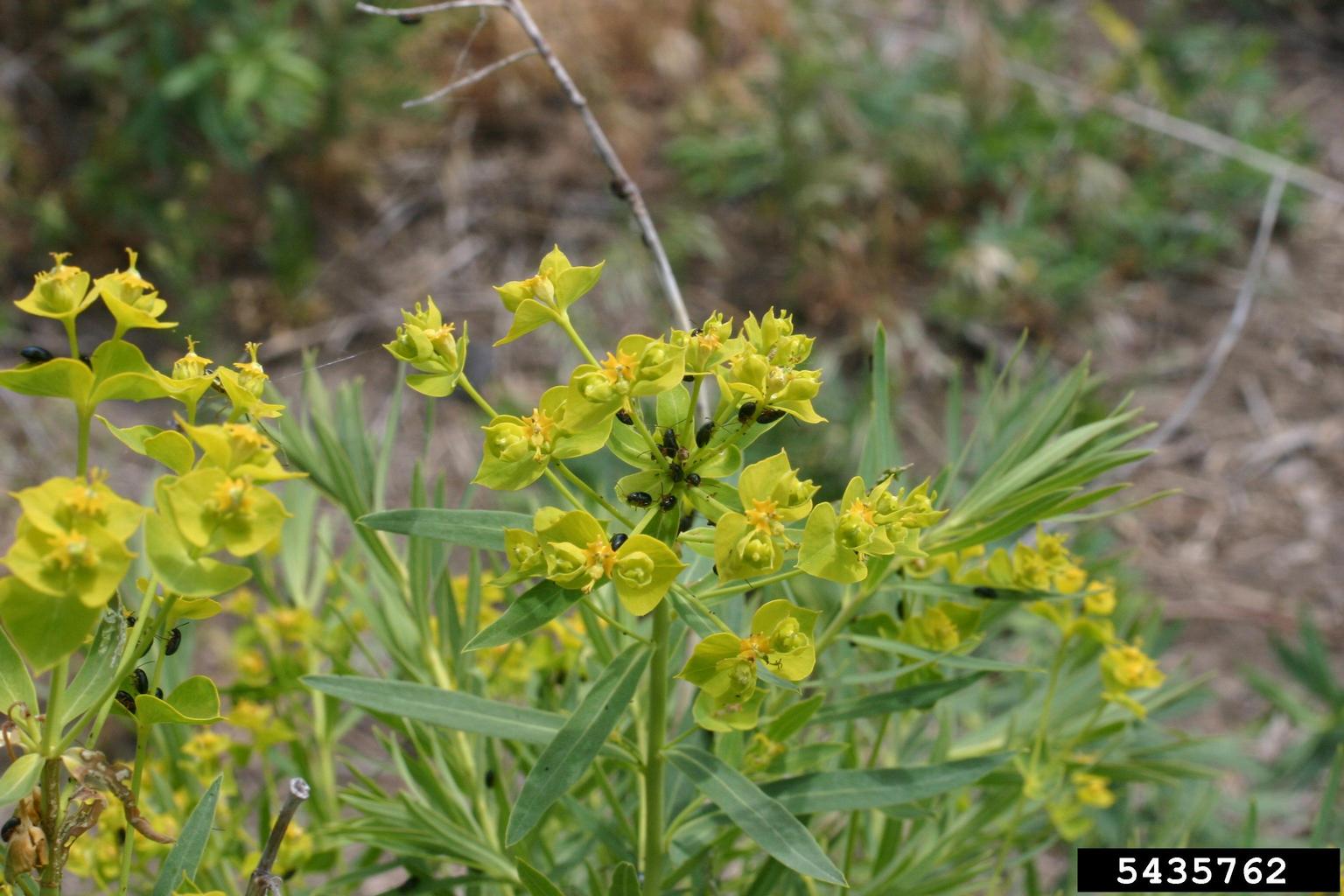
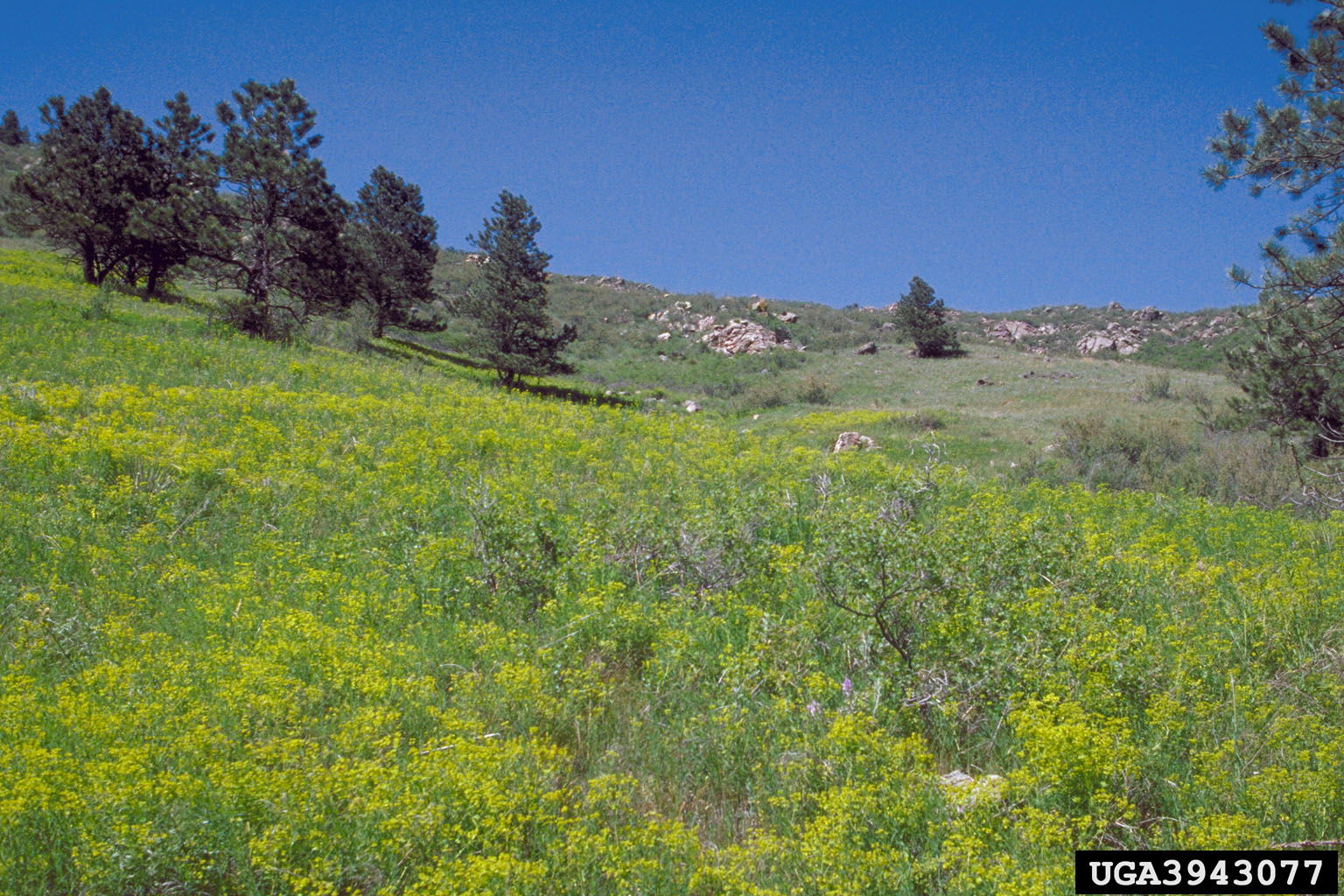
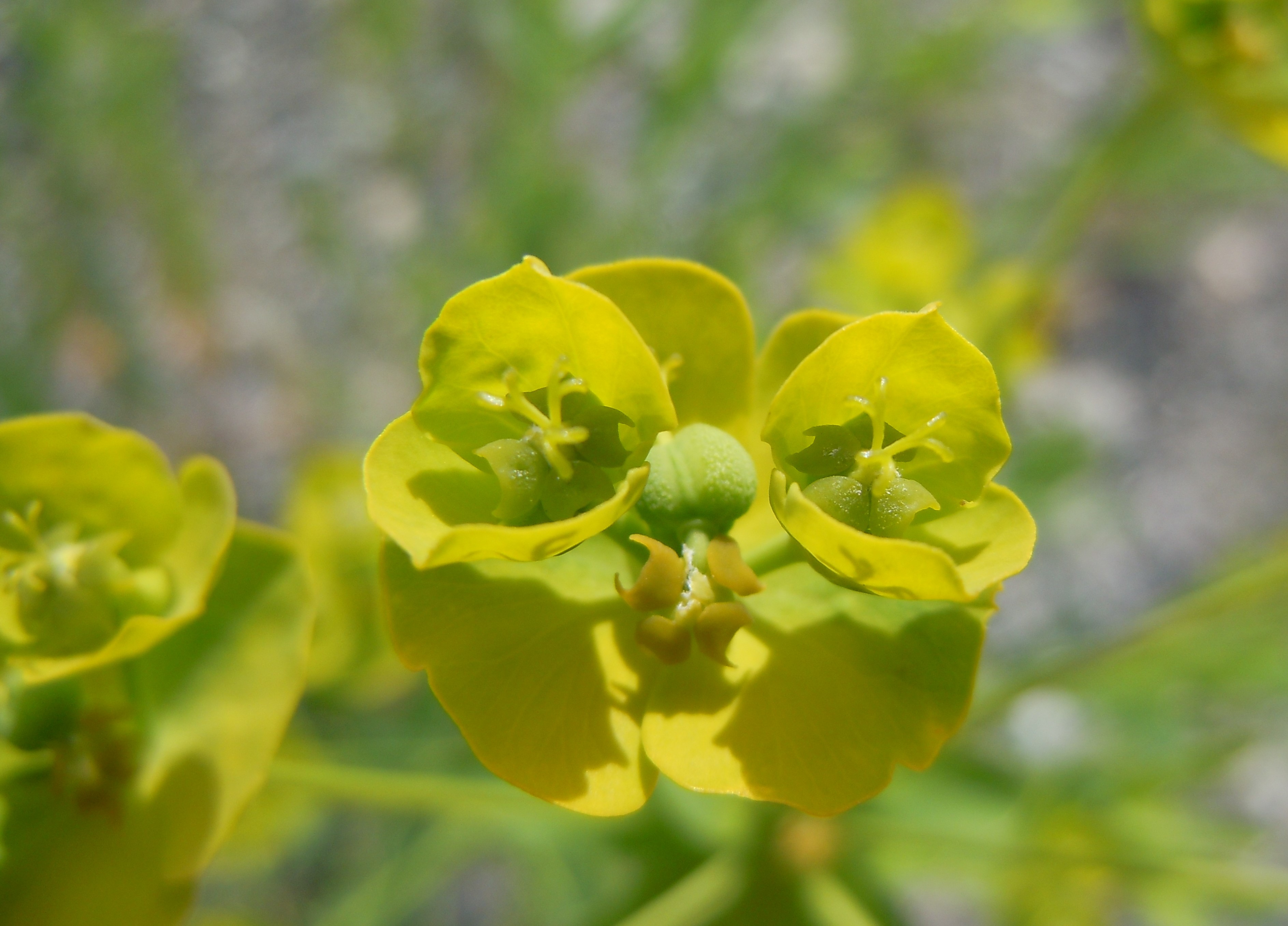
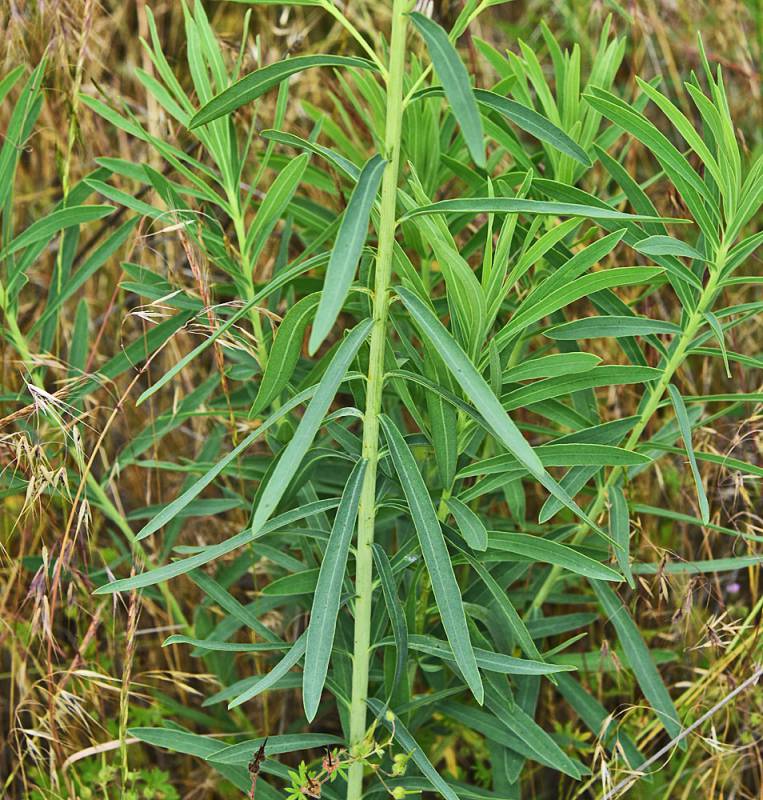

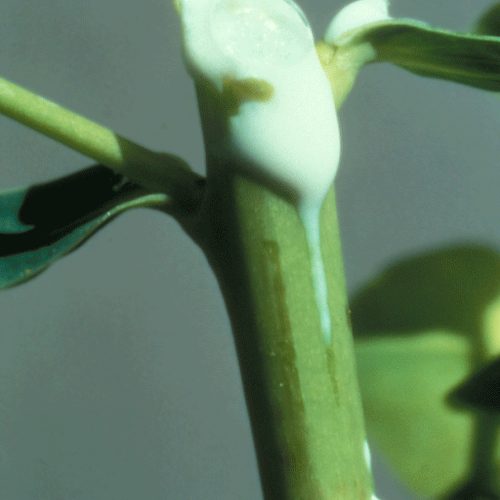
Be aware of look-alike plants
The flowers and bracts look similar to other spurges, such as eggleaf spurge. Eggleaf spurge can be differentiated by its oblong leaves with finely toothed margins and the white hairs on the stem. It also has a whorl of wavy yellowish-green leaves just below the bracts.
When in doubt, take photos and share them with us or report them on iNaturalist.
What to do if you find it
Property owners are required to control leafy spurge on lands that they manage. Please notify us if you see leafy spurge growing in King County. Our program staff can provide you with site-specific advice on how best to remove it. We map all known locations of regulated noxious weeds such as leafy spurge in order to help locate new infestations in time to control them.
Control methods
We recommend using a combination of methods to control noxious weeds. In areas with few weeds, it is important to act quickly before they become harder to control. Make a long-term plan as it often takes several years to get rid of most weeds. Start in the least infested areas first and then move into more heavily infested areas.
When controlling leafy spurge, it is important to protect yourself from the sap. Wear long sleeves, gloves, shoes, and eye protection. If sap contacts skin, make sure to wash the area.
Manual control
Pulling is not recommended due to the extensive root system. The disturbance will encourage bud production and can aid the growth and spread.
Mechanical control
Mowing, burning, and digging are not effective because the entire root system must be excavated for complete control.
Cultural control
Keep desirable vegetation healthy and thick to prevent leafy spurge from spreading. Frequent tilling can be effective at reducing establishment. Clean equipment of plant parts to prevent spread to other locations. Survey regularly for new populations and control promptly.
Biological control
Sheep and goats can safely graze leafy spurge. They are useful for diminishing weed growth before utilizing other control methods. Avoid grazing if the plant is going to seed.
There are several biological control agents, such as flea beetles, that can be used to control leafy spurge. These are only recommended on large infestations and must be used in conjunction with other control methods.
Please refer to Biocontrol Factsheets - NAISMA for more information.
Chemical control
Stay safe when using herbicide:
- Always read the label before use.
- Wear a long-sleeved shirt, long pants, shoes, and eye protection.
- Follow state and local regulations.
For effective long-term control, the establishment of competitive vegetation and the use of selective herbicides is recommended. For more information, please refer to the PNW Weed Management Handbook.
Disposal instructions
Bag entire plant and dispose in the garbage. Composting at home or with municipal yard waste is not recommended.
Noxious Weed Disposal - Washington State Noxious Weed Control Board

 Translate
Translate